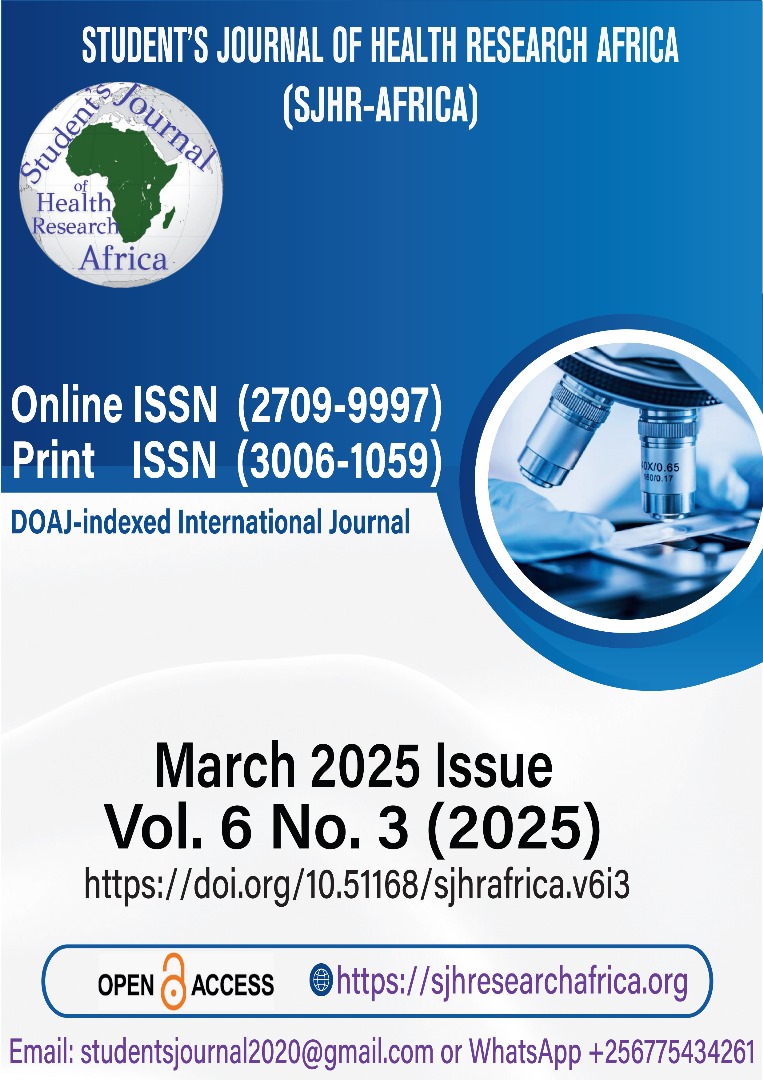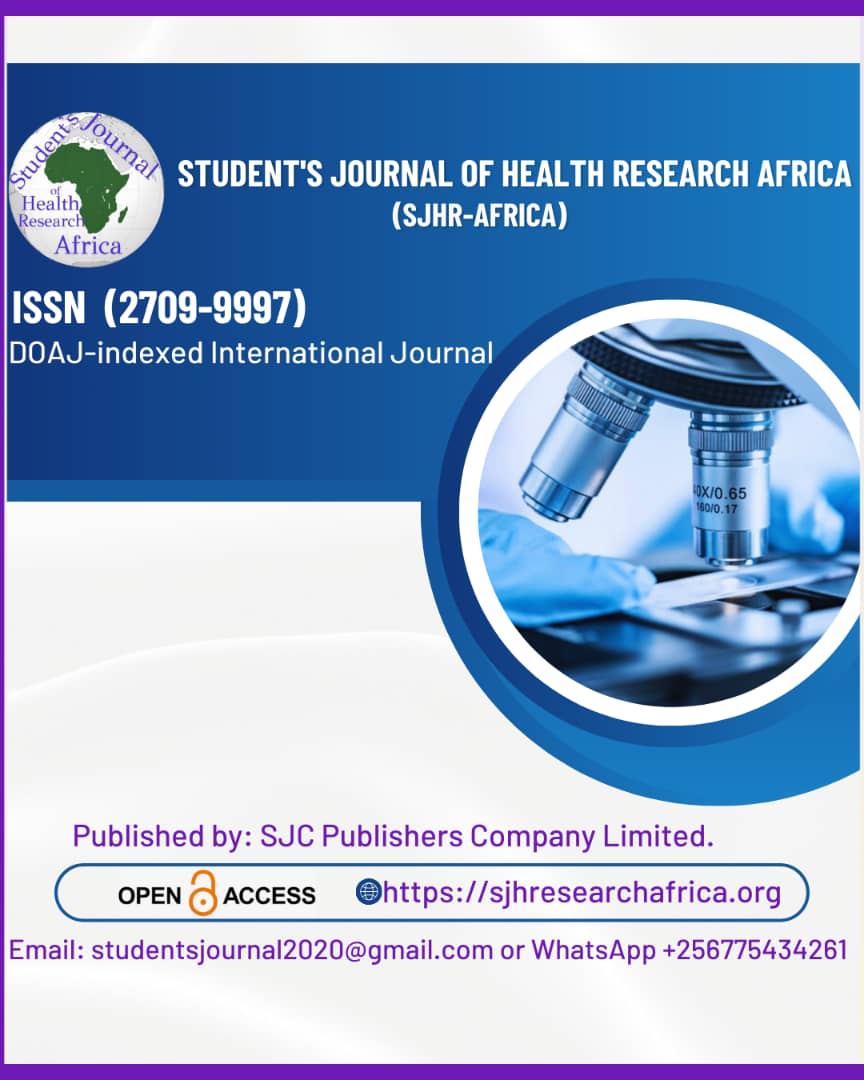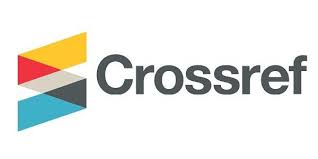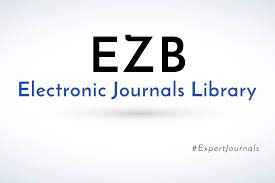EFFECTS OF PRENATAL DEXAMETHASONE ON TERM INFANTS IN CASES OF MATERNAL ANTEPARTUM HEMORRHAGE: A CROSS-SECTIONAL STUDY
DOI:
https://doi.org/10.51168/sjhrafrica.v6i3.1648Keywords:
Dexamethasone, Antenatal, Maternal, Antepartum Hemorrhage (APH), Antepartum hemorrhageAbstract
Background
In the past 25 years, the use of prenatal corticosteroids in pregnant women who are about to give birth, typically between 24 and 34 weeks of gestation, has been one of the most important advancements in perinatal medicine.
Objectives
In this investigation, the effects of maternal antepartum hemorrhage (APH) on the results of term children who were exposed to dexamethasone during pregnancy and those who were not.
Materials and Methods
The study was a retrospective study that was carried out at Hi-Tech Medical College, Bhubaneswar, Odisha, India. Information about 800 patients was extracted. Records pertaining to female patients suffering from APH who gave birth to a single child at 37 weeks or more. Exclusion criteria included those with premature rupture of the membranes or those who did not receive a full course of dexamethasone.
Results
The study included 800 pregnant women, 40 receiving antenatal dexamethasone and 760 not. The dexamethasone group had a lower mean maternal age (31.5±4.3 vs. 34.2±4.2 years; p<0.001) and higher rates of gestational diabetes (25% vs. 10.2%; p<0.001) and asthma (7.5% vs. 1.57%; p<0.05). APH, primarily due to placenta previa, was more common (20% vs. 5.2%). Dexamethasone exposure was linked to lower birth weight, Apgar scores, and gestational age at delivery (p<0.05).
Conclusion
The study concluded that while antenatal dexamethasone for APH was linked to a higher rate of surgical vaginal delivery, an earlier delivery, and a lower neonatal birthweight, it was not linked to SGA newborns, NICU admission, or a low Apgar score.
Recommendation
Antenatal dexamethasone use should be carefully considered, balancing neonatal benefits against risks like lower birth weight and early delivery, particularly in pregnancies complicated by APH.
References
Campbell WA. Antenatal betamethasone compared with dexamethasone (beta code trial): a randomized controlled trial. Obstetrics & Gynecology. 2007 Oct 1;110(4):930. https://doi.org/10.1097/01.AOG.0000285327.27828.1c
Bennet L, Davidson JO, Koome M, Gunn AJ. Glucocorticoids and preterm hypoxic‐ischemic brain injury: the good and the bad. Journal of Pregnancy. 2012;2012(1):751694. https://doi.org/10.1155/2012/751694
Stock SJ, Thomson AJ, Papworth S. Royal College of Obstetricians and Gynaecologists. Antenatal corticosteroids to reduce neonatal morbidity and mortality: Green-top Guideline No. 74. BJOG. 2022 Jul;129(8):e35-60. https://doi.org/10.1111/1471-0528.17027
Parker R, Dalziel SR. Antenatal corticosteroids for accelerating fetal lung maturation for women at risk of preterm birth. Cochrane database of systematic reviews. 2020(12).
Brownfoot FC, Gagliardi DI, Bain E, Middleton P, Crowther CA. Different corticosteroids and regimens for accelerating fetal lung maturation for women at risk of preterm birth. Cochrane Database of Systematic Reviews. 2013(8). https://doi.org/10.1002/14651858.CD006764.pub3
Magann EF, Cummings JE, Niederhauser A, Rodriguez-Thompson D, McCormack R, Chauhan SP. Antepartum bleeding of unknown origin in the second half of pregnancy: a review. Obstetrical & Gynecological Survey. 2005 Nov 1;60(11):741-5. https://doi.org/10.1097/01.ogx.0000182881.53139.f7
Amokrane N, Allen ER, Waterfield A, Datta S. Antepartum haemorrhage. Obstetrics, Gynaecology & Reproductive Medicine. 2016 Feb 1;26(2):33-7. https://doi.org/10.1016/j.ogrm.2015.11.009
Williams MJ, Ramson JA, Brownfoot FC. Different corticosteroids and regimens for accelerating fetal lung maturation for babies at risk of preterm birth. Cochrane Database of Systematic Reviews. 2022(8). https://doi.org/10.1002/14651858.CD006764.pub4
McKinzie AH, Yang Z, Teal E, Daggy JK, Tepper RS, Quinney SK, Rhoads E, Haneline LS, Haas DM. Are newborn outcomes different for term babies who were exposed to antenatal corticosteroids? American journal of obstetrics and gynecology. 2021 Nov 1;225(5):536-e1. https://doi.org/10.1016/j.ajog.2021.04.251
Muche AA, Olayemi OO, Gete YK. Effects of gestational diabetes mellitus on risk of adverse maternal outcomes: a prospective cohort study in Northwest Ethiopia. BMC pregnancy and childbirth. 2020 Dec;20:1-3. https://doi.org/10.1186/s12884-020-2759-8
Taleghani AA, Bhriguvanshi A, Kamath-Rayne BD, Liu C, Narendran V. Timing of antenatal steroid administration and effects on the newborn infant: a retrospective study. American Journal of Perinatology. 2022 Jul;39(10):1065-73. https://doi.org/10.1055/s-0040-1721495
Gorgal R, Gonçalves E, Barros M, Namora G, Magalhães Â, Rodrigues T, Montenegro N. Gestational diabetes mellitus: A risk factor for non‐elective cesarean section. Journal of Obstetrics and Gynaecology Research. 2012 Jan;38(1):154-9. https://doi.org/10.1111/j.1447-0756.2011.01659.x
Berghella V, Saccone G. Fetal fibronectin testing for reducing the risk of preterm birth. Cochrane Database of Systematic Reviews. 2019(7). https://doi.org/10.1002/14651858.CD006843.pub3
Sotiriadis A, Papatheodorou S, Kavvadias A, Makrydimas G. Transvaginal cervical length measurement for prediction of preterm birth in women with threatened preterm labor: a meta‐analysis. Ultrasound in Obstetrics and Gynecology: The Official Journal of the International Society of Ultrasound in Obstetrics and Gynecology. 2010 Jan;35(1):54-64. https://doi.org/10.1002/uog.7457
Leung TY, Chan LW, Tam WH, Leung TN, Lau TK. Risk and prediction of preterm delivery in pregnancies complicated by antepartum hemorrhage of unknown origin before 34 weeks. Gynecologic and obstetric investigation. 2001 Nov 30;52(4):227-31. https://doi.org/10.1159/000052980
Walters A, McKinlay C, Middleton P, Harding JE, Crowther CA. Repeat doses of prenatal corticosteroids for women at risk of preterm birth to improve neonatal health outcomes. Cochrane Database of Systematic Reviews. 2022(4). https://doi.org/10.1002/14651858.CD003935.pub5
Downloads
Published
How to Cite
Issue
Section
License
Copyright (c) 2025 Rosy Karan, Ravi Kumar Sharma

This work is licensed under a Creative Commons Attribution-NonCommercial-NoDerivatives 4.0 International License.






















